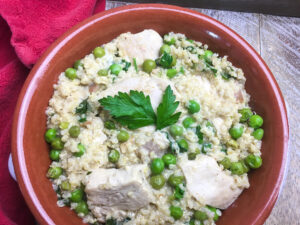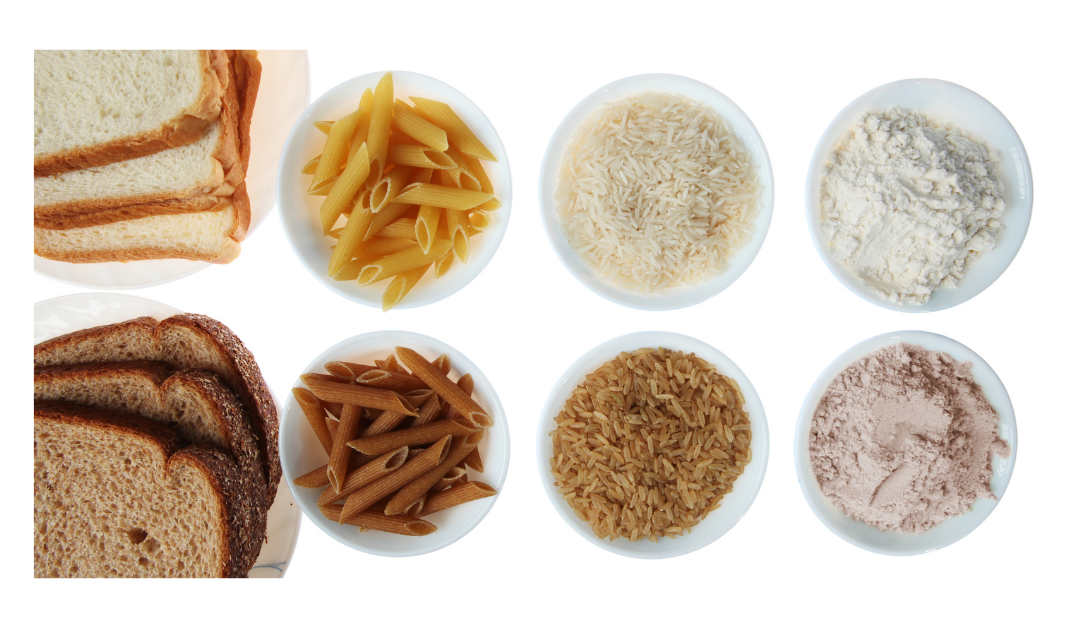You may have heard of the No White Foods Diet or the Brown Food Movement. They both propose that you should cut out white foods and instead go for their brown counterparts. Brown-colored food is deemed healthier as they cover more nutritional categories.
Most health experts agree that basing your dietary choices on the color of food alone is an oversimplified way to approach good nutrition. But is there merit to this strategy?
Let’s compare the typical brown vs white ingredients.
Bread
White bread and similar foods made from refined grains tend to be high in carbohydrates and low in nutrients. On the other hand, whole-grain brown bread is made from flour that contains the entire grain. It retains more of its natural nutritional value compared to bread made from white flour. Plus, whole-grain bread may help curb your blood sugar response and improve feelings of fullness with its fiber content, making it easier to stay within your calorie needs.
Pasta
Pasta is similar to white bread in that it’s made from refined flour that contains fewer nutrients than the unrefined version. Whole-grain pasta typically contains more fiber, which can leave you feeling fuller and more satisfied. The extra fiber can also help slow your body’s digestion of carbs, supporting improved blood sugar control. Also, consider alternative options, such as those made from legumes. Though the texture is slightly different, legume-based pasta tends to have even more protein and fiber than most grain-based varieties.
Sugar
There are two types of brown sugar: factory (or natural) brown sugar that maintains the raw cane juice, and refinery brown sugar, which is white sugar coated with a thin film of syrup or molasses. White sugar is slightly more processed as the molasses are completely stripped out of it, while brown sugar results from stopping the production process earlier. However, while there may be trace amounts of minerals in brown sugar, it’s almost identical nutrition-wise to white sugar. The US Dietary Guidelines recommend no more than 50g of sugar a day, no matter what kind you use.
Rice
All rice types start as brown rice. Brown rice is just white rice that hasn’t been processed to the same extent. The milling process removes the husk, bran, and germ, which increases white rice’s shelf life but removes many nutrients. Therefore, white rice is artificially fortified with nutrients and polished to appear more palatable. Both white and brown rice are high in carbs, but brown rice is a whole grain and contains more fiber, vitamins, and minerals. If you don’t like the taste of brown rice or want to mix it up, try quinoa or bulgur.
Most white foods are unhealthier in the sense that they are heavily processed, higher in carbs, and contain fewer nutrients than their brown counterparts. But nature provides us with an abundance of natural resources, so be sure to eat the food of all color groups for a truly balanced diet.
[RECIPE] One- Skillet Creamy Chicken Quinoa with Peas
Prep time: 10 minutes
Cook time: 20 minutes
Serves: 4
Ingredients:
- 4 thick-cut slices of bacon, pasture-raised if possible, diced small
- 1 lbs. boneless, skinless chicken breasts, pasture raised if possible, sliced
- 1/2 t. onion powder
- 1/2 t. garlic powder
- Sea salt and black pepper, to taste
- 1 c. white quinoa, rinsed and drained
- 2 c. chicken broth, preferably organic
- 1 1/2 c. frozen peas
- 1/4 c. organic half & half
- 4 oz. organic cream cheese, cut into chunks
- 1/2 c. organic Parmesan cheese, freshly grated
- 1/2 c. fresh parsley, chopped
Directions:
- Add bacon to a large, high-sided skillet set over medium-high heat. Cook, stirring occasionally, for approximately 2-3 minutes. Remove from heat and carefully drain excess bacon grease from skillet.
- Return the skillet to medium heat and add sliced chicken, onion powder, and garlic powder. Season with salt and black pepper, to taste, and stir to combine. Cook, stirring occasionally until chicken starts to develop some color, approximately 2-3 minutes.
- Add the quinoa and chicken broth and stir to combine. Increase heat to high and bring to a boil, and then immediately reduce heat to medium-low. Cover and simmer until the chicken and quinoa are cooked through, approximately 10-12 minutes.
- Uncover and stir in frozen peas, half & half, cream cheese, and half of the freshly grated Parmesan cheese. Stir to combine and remove from heat. Cover and let sit for another minute or two or until the cheese is completely melted.
- Remove cover and stir in fresh parsley. Season with additional salt and black pepper, if desired, and serve immediately with remaining Parmesan cheese. Enjoy!
To Your Health,
Patti






